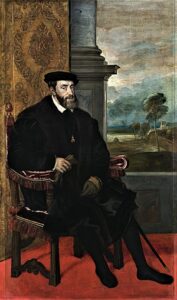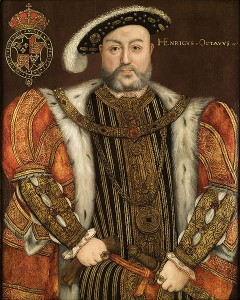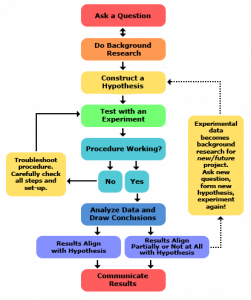Humanism in the Northern Renaissance
This section is required.
Humanism continued in the North, but the emphasis was much more Christian than Italian Humanism. It still focused on Plato, and continued the reinspection of Greek and Roman ideals. The Northern Humanists were more concerned in helping making life better, for everybody. The Church was seen as the vehicle for creating a better society. This lead to sweeping reforms.
Two Giant Scholars
Desiderius Erasmus (1466-1536)
- Humanist scholar and priest
- Deeply spiritual and well traveled
- Two important works: Familiar Conversations (1519) and The Praise of Folly
Familiar Conversations
- A satiric attack on the abuses within the Catholic Church
- His goal was to internally reform of the Catholic Church
- He was not in favor of the creation of Protestant Churches
In Praise of Folly
- A satire of the hypocrisy and pretensions that prevailed during his time
Sir Thomas More (1478-1535)
- Humanist scholar and friend of Erasmus
- Wrote Utopia
- A man of principle, he was executed because he could not in good conscious fully pledge his allegiance to King Henry VIII’s Church of England
Politics
The Hapsburgs – required
The Hapsburgs Transcript (PDF)
Bruges
The above video is a short, optional tourist view of Bruge today. Nothing to read, only music and the sites in Bruges
Bruge mini-lecture
Dukes of Burgundy and Renaissance art – Khan Academy article. Required
King Henry VIII of England
King Henry – mini lecture on idolatry and iconoclasm
King Henry, Iconoclasm and the Arts – required.
Religion -The Protestant Reformation
Martin Luther — 1483-1546
required – skim for major points
Martin Luther Transcript (PDF)
One of the most important figures of the 1500’s
Monk and scholar — professor at Wittenburg University
Famous disputation — Ninety-five These optional
Luther’s Legacy
- Ninety-five These was an attack primarily aimed at the practice of “indulgences.’
- Indulgences — a way to pay priests for your salvation
- God’s gift — the printing press
- Separate Protestant churches formed
- Luther was not an iconoclast
- He was an art lover and composed hymns
John Calvin 1509-64 (more information – optional)
- Take away distractions from spirituality, including the arts
- Linked to Puritanism and America
The Basis for the Creation of Protestant Churches
Basis for Protestant Churches Transcript (PDF)
- If you disagreed with the church, you were kicked out — excommunicated
- The opulence and worldly wealth and pursuits of the Catholic Church
- The principle that faith needed to be combined with deeds for salvation
- The power, ritual and dogma associated with the Papacy
- The desire to focus on the essentials of Christianity — which had consequences for the arts.
Massive Destruction of Art in the name of religion….
“all the churches, chapels and houses of religion utterly defaced, and no kind of thing left whole within them, but broken and utterly destroyed, being done after such order and by so few folks that it is to be marvelled at.” The Church of Our Lady in Antwerp, later made the cathedral (illustrated at top): “looked like a hell, with above 10,000 torches burning, and such a noise as if heaven and earth had got together, with falling of images and beating down of costly works, such sort that the spoil was so great that a man could not well pass through the church. So that in fine [short], I cannot write you in x sheets of paper the strange sight I saw there, organs and all destroyed.”
A quote from the Wikipedia article on Beeldenstorm.
Science & Technology
Exploration, Economics and the Arts
The Natural resource of the Americas and Caribbean
New Economics Transcript (PDF)
- The new staples for Europe – Cocoa, sugar, cotton, tobacco
- Explosion of the Merchant Class – More wealth amongst more people was good for the arts
Astronomy and The Scientific Method
Astronomy and scientific method Transcript (PDF)
Nicolas Copernicus — 1473-1543 – optional
- On the Revolutions of Celestial Bodies
- An argument that the earth and planets orbited the sun
Francis Bacon — 1562-1626
The “Scientific Method’
Printing press Transcript (PDF)
- Printing of Plays and poetry
- Multiple copies of artworks, such as engravings
Architecture
The Evolution of the Castle
Evolution of castles Transcript (PDF)
Quick pictorial article – 4 Renaissance castles – Loire Valley, France – optional




